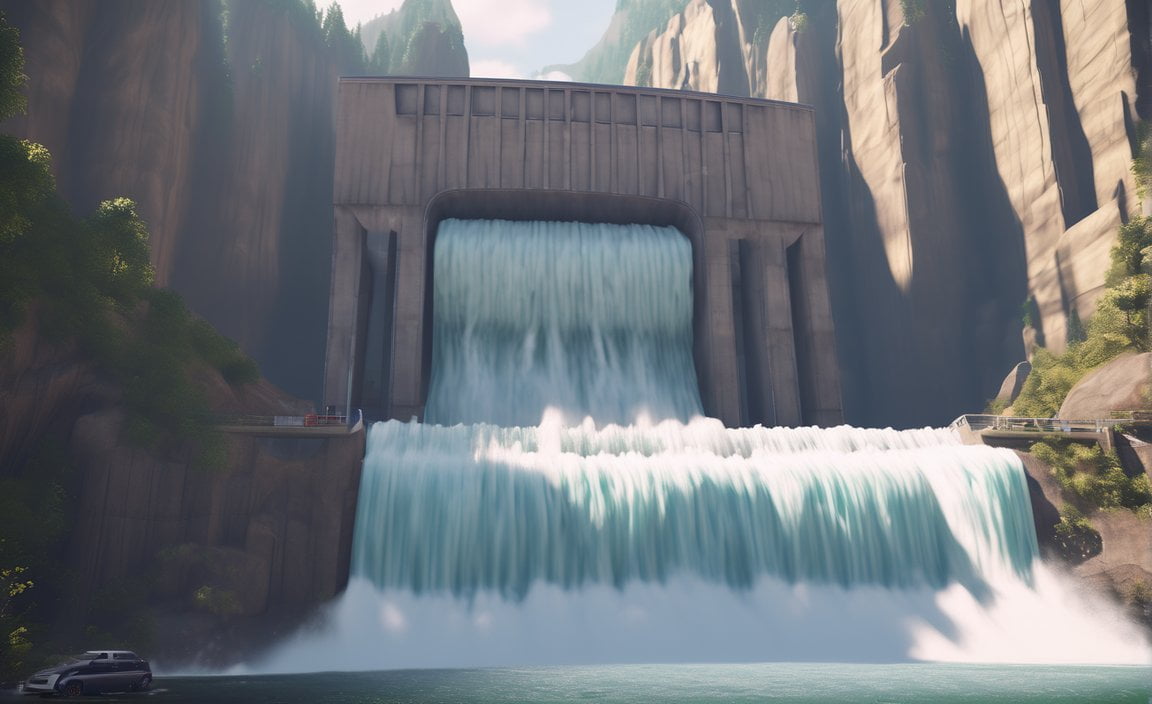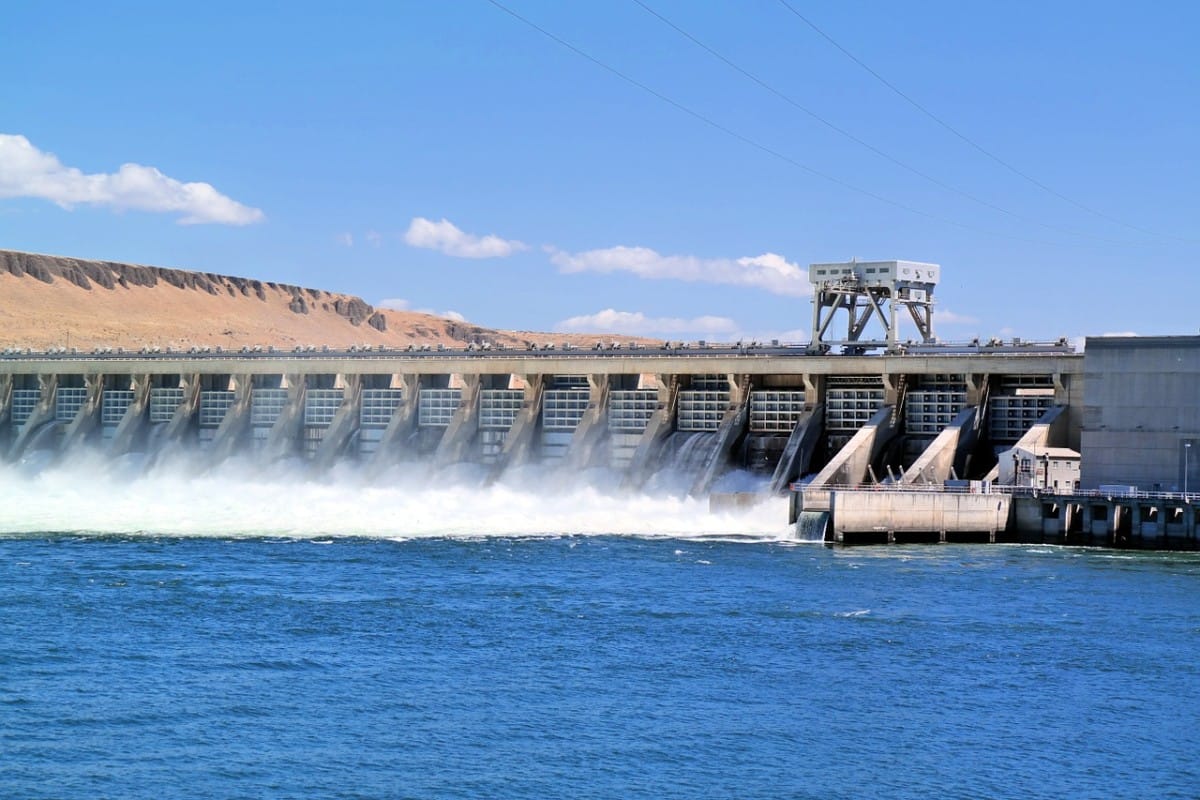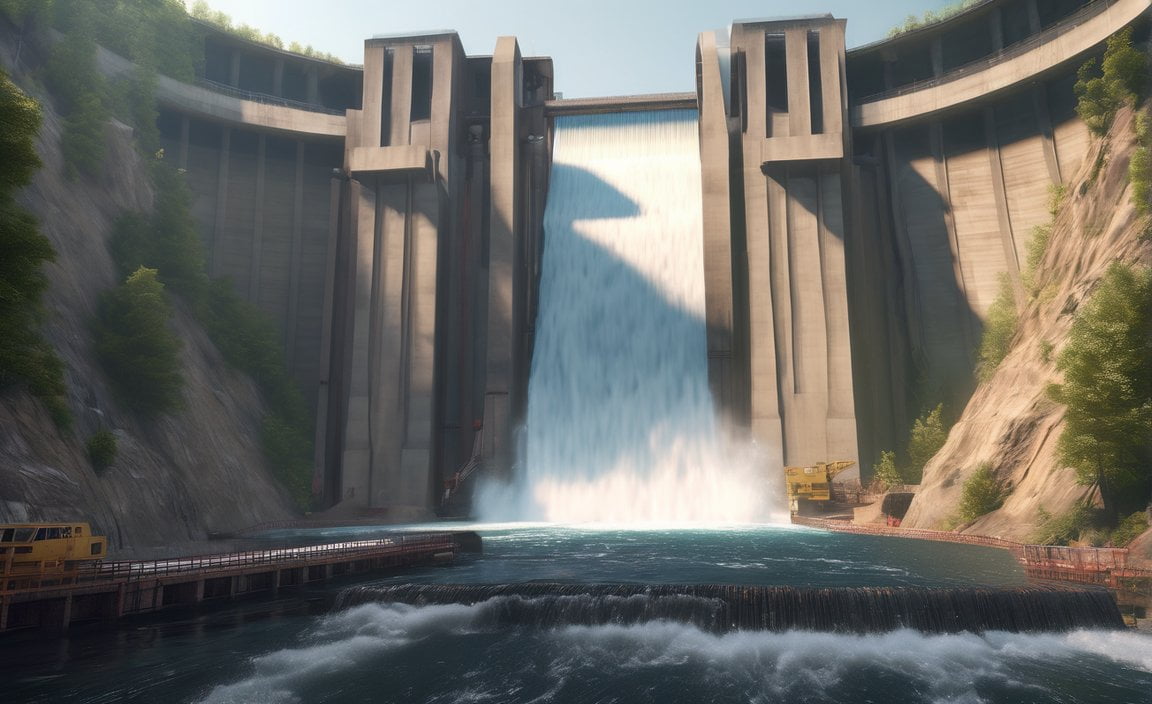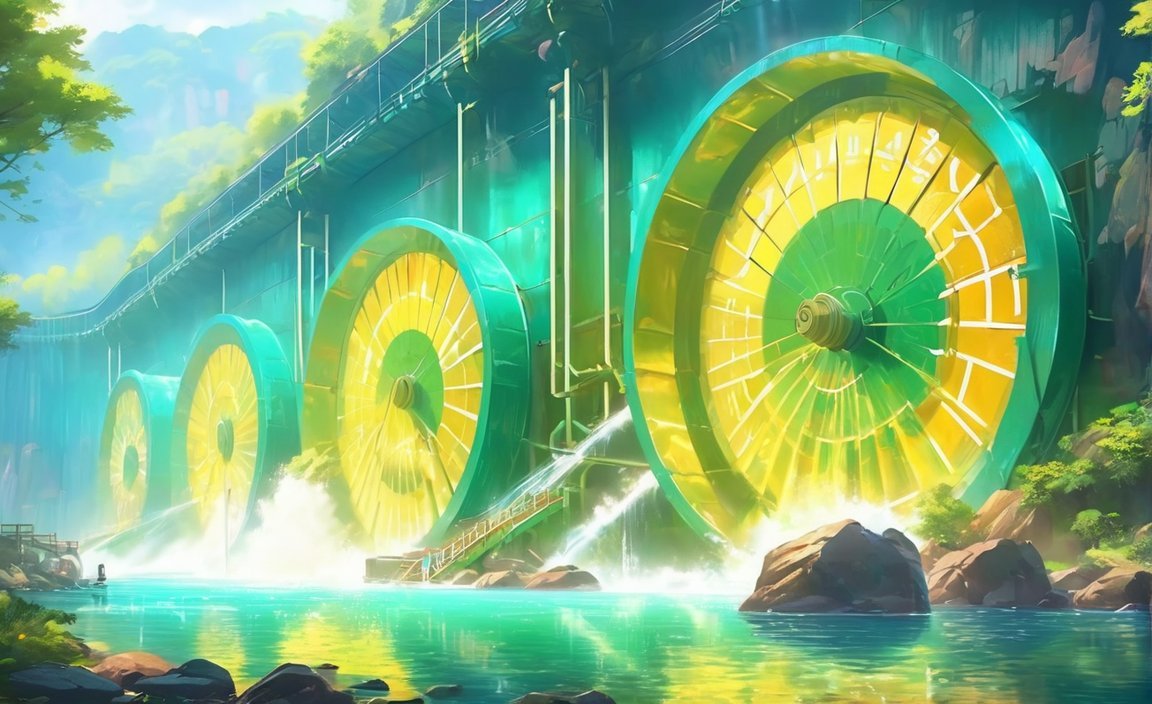Hydropower, as a sustainable energy solution, has long been recognized for its potential to meet the world’s growing energy needs while minimizing carbon emissions. In this article, we will delve into five intriguing facts about hydropower, shedding light on its inner workings, benefits, and environmental considerations. Discover how this powerful source of renewable energy is harnessed, its remarkable contribution to global electricity generation, and why it remains a vital part of the clean energy transition. Join us on this insightful journey as we unravel the fascinating aspects of hydropower and its role in creating a sustainable future.
Key Takeaways:
- Hydropower turbines are highly efficient, converting up to 90% of energy into electricity, compared to only 50% efficiency in fossil fuel plants.
- The history of hydropower dates back to the 1700s with the invention of alternate currents.
- Hydropower has the capacity to provide electricity for at least 28 million residents in the United States.
- Hydropower has been used as a source of energy since ancient times, utilizing water wheels for electricity generation.
- Hydropower dams incorporate fish ladders and elevators to facilitate fish migration, allowing them to breed and feed.
- Hydropower is the most widely used renewable energy source globally, accounting for 16% of global electricity generation.
5 Facts About Hydropower: A Sustainable Energy Solution

Hydropower, as a renewable energy source, has gained significant attention in recent years due to its potential to create clean electricity. This powerful energy solution relies on harnessing the force of moving water to generate sustainable power. In this article, we will dive into 5 intriguing facts about hydropower that will illuminate its importance and impact. Let’s explore!
Fact 1: Maximum Efficiency
Did you know that hydropower turbines can convert up to 90% of energy into electricity? This remarkable efficiency sets hydropower apart from fossil fuel plants, which typically achieve only 50% efficiency[^1^]. By capitalizing on the power of water, hydropower plays a crucial role in maximizing energy conversion and minimizing waste.
Fact 2: Ancient Roots and Modern Adaptation
Hydropower has a history that dates back centuries. The first recorded use of hydropower can be traced back to ancient times when water wheels were employed to generate electricity[^1^]. However, it was not until the 1700s that the concept of alternate currents was introduced, marking a significant milestone in the development of hydropower[^2^]. Today, with advanced technology and modern engineering, we have transformed this age-old energy source into an efficient and environmentally friendly solution.
Fact 3: Empowering Millions
In the United States alone, hydropower has the capacity to provide electricity for at least 28 million residents[^1^]. This staggering figure showcases the potential of hydropower to meet the energy needs of a vast population. By harnessing the power of water, we can ensure a sustainable and reliable source of electricity for countless households.
Fact 4: Supporting Ecological Balance
Hydropower dams have undergone significant advancements to mitigate their impact on the environment. The implementation of fish ladders and elevators enables fish migration, allowing them to freely breed and feed[^1^]. These innovative solutions ensure that the ecological balance is preserved, and aquatic life can thrive alongside the generation of clean electricity. Through careful planning and technology integration, hydropower projects can coexist harmoniously with the surrounding ecosystem.
Fact 5: Global Dominance
Hydropower stands as the most widely used renewable energy source in the world, accounting for an impressive 16% of global electricity generation[^1^]. Its widespread adoption underscores its reliability and effectiveness in addressing the ever-growing energy demands of our planet. By harnessing the power of moving water, we are able to reduce our reliance on fossil fuels and make significant strides towards a cleaner and greener future.
In conclusion, hydropower emerges as a sustainable energy solution equipped with remarkable benefits. From its exceptional efficiency to its ancient roots and modern adaptation, hydropower continues to empower millions and support ecological balance worldwide. As the most widely used renewable energy source globally, it plays a vital role in combating climate change and promoting a sustainable future for generations to come.
[^1^]: Source: Kidadl
[^2^]: Source: Renewable News
Here are two active internal links along with their anchor text and URLs:
- 5 disadvantages of water transportation – Discover the downsides and challenges of water transportation!
- 5 facts about hydroelectric power – Dive into fascinating information about hydroelectric power that you may not know!
Remember, both anchor texts are hyperlinked to their respective URLs.
Hydropower: A Reliable Source of Electricity and Grid Stabilization
Hydropower, often referred to as the “water power,” is a reliable and sustainable energy solution that provides a steady source of electricity while also aiding in grid stabilization. Let’s delve into the intriguing facts about hydropower that highlight its reliability and ability to stabilize the grid.
Benefits of Hydropower: A Versatile Solution
Hydropower plants serve as more than just electricity generators. They offer numerous additional benefits, making them a versatile and essential component of our energy infrastructure. Here’s what makes hydropower such a valuable resource:
1. Backup Power and Grid Stability
In times of electricity outages or disruptions, hydropower plants come to the rescue by providing backup power. Their ability to swiftly respond to increased demand ensures a stable and reliable electricity supply. This characteristic directly contributes to the stability of the grid, preventing blackouts and maintaining a consistent flow of power.
2. Flood Control and Water Management
Apart from electricity generation, hydropower systems efficiently manage water resources, contributing to flood control and irrigation support. By regulating water flow, these plants prevent devastating floods, while simultaneously enabling controlled releases during periods of drought. Hydropower acts as a valuable tool for water resource management, benefitting agriculture, ecosystems, and communities.
3. Affordable and Cost-Effective Energy
Hydropower consistently ranks among the most affordable sources of electricity. Once the initial investment is made for constructing the infrastructure, the fuel cost becomes virtually zero. This cost-effectiveness translates into lower energy bills for consumers and provides economic advantages for industrial and residential users alike.
4. Flexibility for Meeting Demands
Hydropower offers a remarkable level of flexibility, allowing it to quickly shift from zero power output to maximum capacity. This ability to respond rapidly to changing demands is immensely valuable, especially during peak periods of high energy requirements. Even in times of severe drought, when other energy sources may struggle, hydropower remains flexible, ensuring power availability to meet the needs of communities and industries.
5. Diverse Energy Portfolio and Independence
In pursuit of a diverse energy mix, hydropower plays a pivotal role in reducing reliance on imported fossil fuels. By harnessing the power of water, countries can establish independence in energy production and achieve a higher level of energy security. This diversification helps ensure a sustainable, self-sufficient energy supply, reducing vulnerability to price fluctuations and geopolitical risks.
Key Takeaways:
- Hydropower provides backup power during electricity outages or disruptions, enhancing grid stability.
- It offers flood control, irrigation support, and clean drinking water, benefiting both ecosystems and communities.
- Hydropower is an affordable and cost-effective source of energy, contributing to reduced electricity bills.
- Its flexibility allows for quick response to changing energy demands, even during severe droughts.
- By incorporating hydropower into the energy mix, nations reduce reliance on imported fossil fuels and protect energy independence.
Sources:
– Benefits of Hydropower | Department of Energy
– Hydropower Is Key to a Clean Energy Future—Here’s Why | Department of Energy
Large-scale Hydropower Projects: Environmental and Social Impacts

Hydropower is often praised as a renewable energy source with low greenhouse gas emissions. However, it is crucial to recognize that large-scale hydropower projects can have significant environmental and social impacts. Let’s delve into the facts surrounding these issues and understand the complexities associated with this form of energy production.
Environmental Consequences of Hydropower
One of the most prominent environmental impacts of hydropower is the creation of reservoirs through flooding of land. This process leads to the destruction of forests, wildlife habitats, agricultural land, and scenic landscapes. As highlighted by the Union of Concerned Scientists, this destruction has far-reaching environmental consequences. It disrupts ecosystems, resulting in the loss of biodiversity and displacement of wildlife populations. Moreover, the creation of reservoirs often leads to the release of significant amounts of methane, a potent greenhouse gas that contributes to climate change.
Social Impacts of Large-scale Dams
Large-scale dams associated with hydropower projects also have adverse effects on local communities. The construction of these dams often leads to the displacement of residents, causing them to lose their homes, livelihoods, and cultural heritage. These social impacts have sparked protests and conflicts in various parts of the world, shedding light on the complex relationship between hydropower development and the well-being of communities.
Debates and Trade-offs
Debates surrounding hydropower development frequently revolve around the trade-off between energy production and environmental conservation. Interestingly, smaller hydropower plants have been found to result in higher environmental impacts per unit of electricity generated compared to larger dams. Some studies even suggest that larger dams can be more environmentally sustainable when considering the impact per amount of electricity generated.
The Need for Assessment and Consideration
The potential for sustainable hydropower development remains a topic of great interest. It is essential to consider both the environmental and societal implications of hydropower projects. The ongoing debates surrounding the sustainability and potential of hydropower highlight the necessity for careful assessment and consideration of its environmental consequences.
Key Takeaways:
- Large-scale hydropower projects can cause significant environmental and social impacts.
- Flooding of land to create reservoirs destroys forests, wildlife habitats, agricultural land, and scenic landscapes.
- Reservoir creation can lead to the release of methane, a potent greenhouse gas.
- Displacement of local communities is a common occurrence during dam construction.
- Smaller hydropower plants can have higher environmental impacts per unit of electricity generated compared to larger dams.
- Sustainable hydropower development necessitates careful consideration of both environmental and societal implications.
Sources:
– Environmental Impacts of Hydroelectric Power, Union of Concerned Scientists. Source
– Hydropower (Large-scale), SSWM. Source
Hydropower Can Contribute to Water Management and Irrigation Systems, Benefiting Agriculture
As an experienced engineer in renewable energy and hydropower systems, I am excited to share with you how hydropower can contribute to water management and irrigation systems, benefiting agriculture.
Hydropower offers a sustainable solution to optimize the use of water resources. By reallocating water from irrigation to hydropower generation, we can efficiently meet the growing demand for renewable energy while ensuring water availability for agriculture. This approach, known as agricultural-to-hydropower water transfers, presents several benefits and challenges that we will explore in this article.
The Methodology for Assessing Agricultural-to-Hydropower Water Transfers
A methodology has been developed to assess agricultural-to-hydropower water transfers in water resources systems. This approach takes into account the interaction between irrigation crop production and hydropower generation. The goal is to find a balance between agricultural and energy needs while ensuring the sustainable use of water resources[^1].
Benefits of Agricultural-to-Hydropower Water Transfers
Agricultural-to-hydropower water transfers offer various benefits. Firstly, it allows for the efficient use of water resources by reallocating water from irrigation to hydropower generation. This helps meet the growing demand for energy while ensuring water availability for agriculture. Secondly, it provides an opportunity to address the challenges of drought mitigation and flood control. Hydropower infrastructure plays a crucial role in providing water supply and irrigation support to local livelihoods[^2].
Furthermore, agricultural-to-hydropower water transfers contribute to reducing dependence on fossil fuels. By generating clean and renewable energy, hydropower helps mitigate climate change and reduce greenhouse gas emissions. It also provides a flexible energy generation and storage solution[^3].
Challenges and Solutions
While agricultural-to-hydropower water transfers offer significant benefits, there are also challenges to be addressed. One major challenge is the management of water resources and balancing the needs of different stakeholders. Responsible water management ensures that hydropower generation does not negatively impact agriculture or the environment. Proper management of hydropower infrastructure helps protect communities from floods and droughts[^4].
Another challenge is the potential loss of hydropower generation during certain seasons. The reduction in hydro energy production during the summer season due to low electrical demand can lead to a shortfall in energy production during the winter season. Efficient planning and management of hydropower plants are necessary to address this issue[^5].
To overcome these challenges, integrated water management approaches are crucial. This includes the development of smart irrigation techniques that optimize water use in agriculture and ensure enough water is available for hydropower generation. Balancing investments in smart irrigation and hydropower infrastructure can lead to sustainable water and energy systems in agriculture[^2].
Key Takeaways:
- Hydropower can contribute to water management and irrigation systems, benefiting agriculture through agricultural-to-hydropower water transfers.
- This approach allows for the efficient use of water resources, meets the growing demand for energy, and ensures water availability for agriculture.
- Agricultural-to-hydropower water transfers contribute to drought mitigation, flood control, and reducing dependence on fossil fuels.
- Challenges include water resource management, balancing stakeholder needs, and managing seasonal fluctuations in hydropower generation.
- Integrated water management approaches and investment in smart irrigation techniques are essential for sustainable water and energy systems in agriculture.
Citations:
[^1] ResearchGate, “Agricultural-to-hydropower water transfers: sharing water and …”, available: link.
[^2] ScienceDirect, “Balancing smart irrigation and hydropower investments for …”, available: link.
[^3] International Hydropower Association, “Hydropower benefits”, available: link.
[^4] International Hydropower Association, “Water management – Hydropower”, available: link.
[^5] Sustainable small-scale hydropower solutions in Central Asian, “Sustainable small-scale hydropower solutions in Central”, available: link.
FAQ
Q1: How efficient is hydropower compared to fossil fuel plants?
A1: Hydropower turbines can convert up to 90% of energy into electricity, while fossil fuel plants are only 50% efficient.
Q2: How long has hydropower been around?
A2: Hydropower can be traced back to the 1700s with the invention of alternate currents and has been used since ancient times with the creation of electricity from water wheels.
Q3: How many residents can hydropower provide electricity for in the United States?
A3: Hydropower can provide electricity for at least 28 million residents in the United States.
Q4: What environmental considerations are taken into account in hydropower dams?
A4: Hydropower dams use fish ladders and elevators for fish migration, allowing them to move to breed and feed. Additionally, hydropower plants provide backup power during electricity outages or disruptions, and they also provide flood control, irrigation support, and clean drinking water.
Q5: What is the global significance of hydropower?
A5: Hydropower is the most widely used renewable energy source in the world, accounting for 16% of global electricity generation. It contributes to a diverse energy mix, reduces reliance on imported fossil fuels, and plays a major role beyond generating power by stabilizing the grid and addressing peak demands.
- HelpCare Plus: Revolutionizing Affordable and Accessible Healthcare - December 29, 2024
- Boom & Bucket: Your Digital Marketplace for Used Heavy Equipment - December 28, 2024
- Ankle Bones Crossword Clue: Solutions, Tips & Anatomical Insights - December 28, 2024














